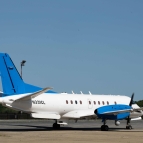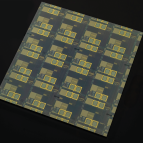Kwajalein Modernization and Remoting Program Radar Open System Architecture

From intercontinental ballistic missile developmental testing in the late 1960s to hypersonic vehicle testing in the 2010s, the suite of tracking and staring optical sensors at the U.S. Army Reagan Test Site on the Kwajalein Atoll, Marshall Islands, has made critical contributions to Department of War missile defense and space control programs.
In 2002, the Kwajalein Modernization and Remoting (KMAR) program introduced an open system approach to radars that uses modular and fully defined software and hardware interfaces. Prior to the KMAR program, the Kiernan Reentry Measurement Site (KREMS) radars were essentially “one of a kind.” Each radar had unique hardware architecture and no common spare parts, with each sensor requiring its own stockroom and expert staff. The uniqueness of each sensor required a devoted team of sensor-specific engineers and technicians to operate and maintain the sensor. This operation and maintenance was extremely expensive.
We introduced the Radar Open System Architecture (ROSA), which replaced all unique radar hardware with a common core, eliminating a stove-piped approach to radar systems development. Each radar was decomposed into common functional subsystems, and commercial off-the-shelf (COTS) components were utilized to provide needed functionality. The KMAR program was a fantastic success, with a more than 70% reduction in software lines of code, 85% reduction in software operating systems/platforms, 80% reduction in custom hardware, and more than 85% COTS hardware utilized in the radar upgrade. The KMAR program developed the Office of the Secretary of Defense award–winning ROSA software that handled radar operations and signal processing, and enabled CONUS (continental United States) remote control of the radars from Huntsville, Alabama.
We continue to build upon the use of open system architectures at the Reagan Test Site. The Main Radar Computer Replacement program in 2010 introduced ROSA II to the KREMS radar system and implemented a publish-subscribe scheme for the radars and the real-time signal processing chain. ROSA II introduced an advanced modular/componentized design and a middleware or isolation layer to the radar system. The modular design made it possible to “compose a radar system” by selecting desired modules based upon the mission’s needs. The application-oriented specialization increased productivity at the test range. Currently, we are working to advance ROSA technology and capabilities at the Reagan Test Site via the KREMS Technology Re-architecting (KTR) program. The KTR program is expected to run from 2022 to 2027.



